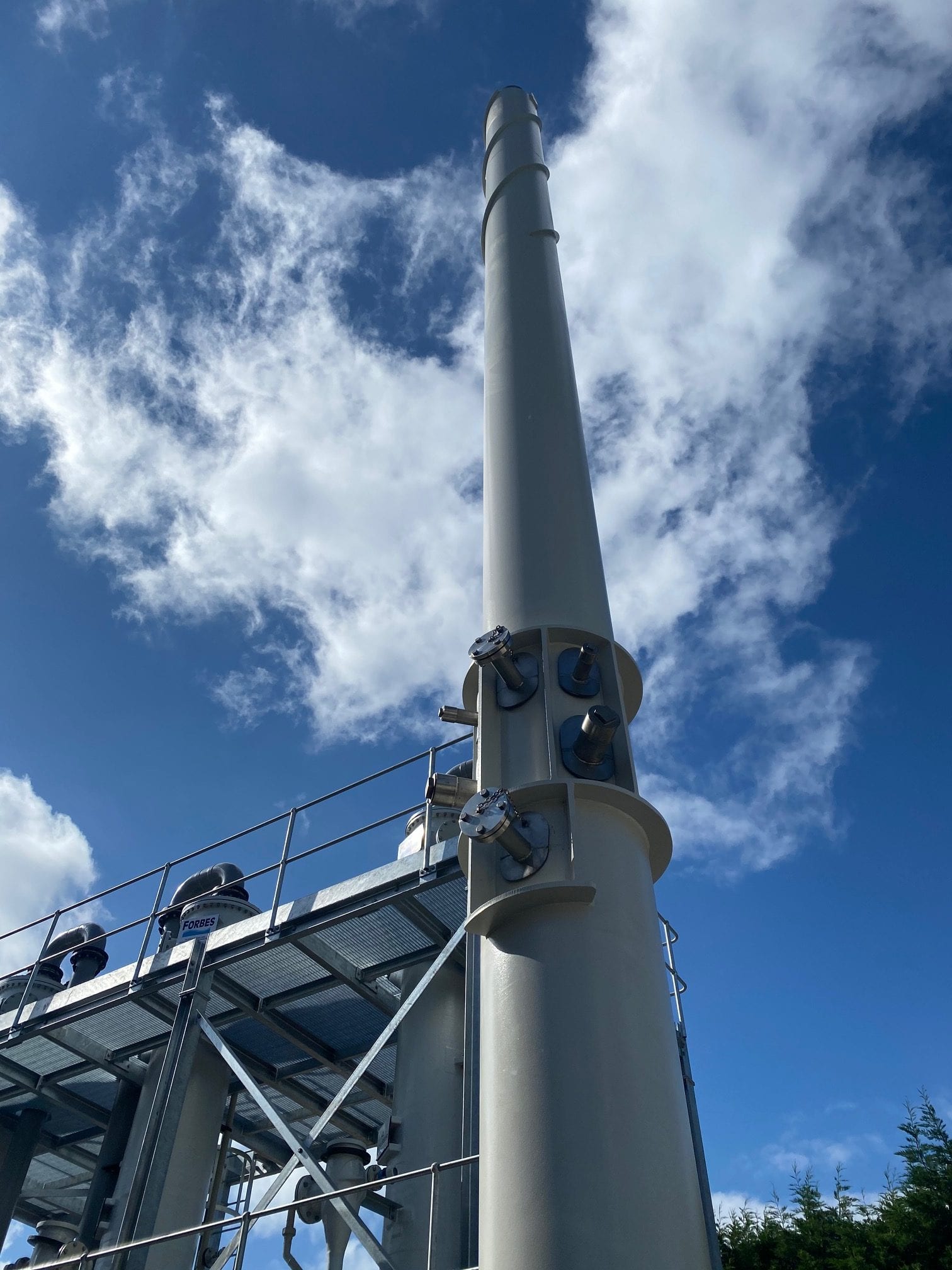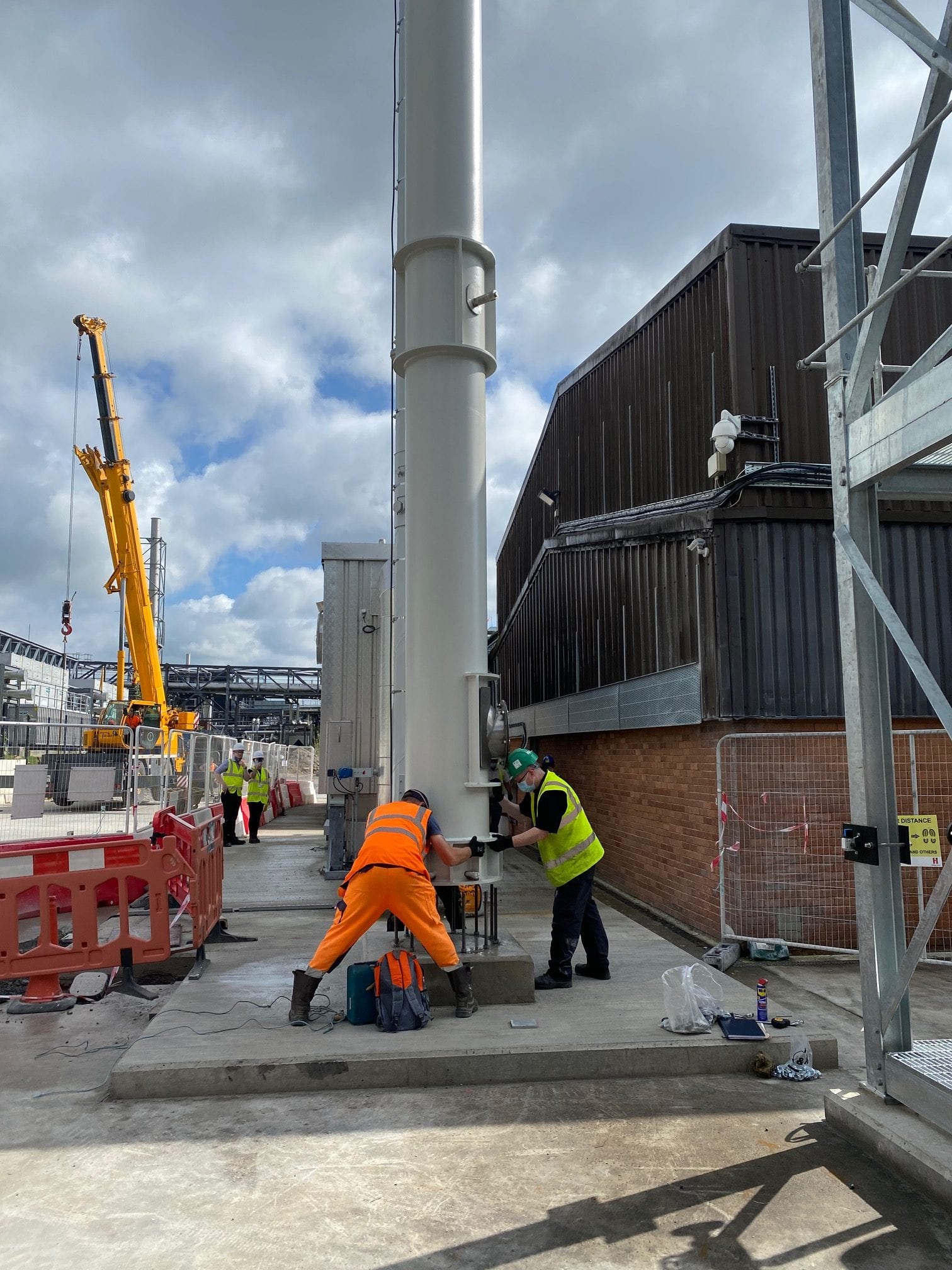Project Brief
John J Doyle Ltd was contracted by Arran Chemical Company to design a vent stack for a regenerative thermal oxidiser scrubber integration unit at 15m tall. Arran Chemical Company specialises in chemical manufacture of products for healthcare, fragrance, personal care, chemical and industrial applications.
A new licensed emission was required to be delivered via a new carbon steel stack at the site which must contain multiple connections for continuous and intermittent environmental monitoring equipment. These sample points must be at different orientations, sizes and elevations. The stack must withstand multiple VOCs (volatile organic compounds) including acetone, acetonitrile, cyclohexane, dichloromethane, ethanol, ethyl acetate, heptane and others.
The vent stack for the regenerative thermal oxidiser scrubber integration unit will operate at a flowrate of 1000-3000 m³/hr, depending on the required operation. The stack is fed from an upstream fan, with a discharge pressure of up to 10 mbarg. All noise limitations in the specification must be met.
Materials Used
Single Shell Construction in S275J2 Carbon Steel 610ø
Internal 316L Stainless Steel Liner 340ø coning to 150ø
Result
John J Doyle Ltd had to determine the best materials to provide the greatest life expectancy due to the potential VOCs the stack would be exposed to. S275j2 carbon steel and 316L stainless steel were determined to the best materials for the project.
Once the material was identified, the most efficient sizing and design for the greatest velocity of emissions were to be decided. At this point, it was decided that the system would cone to 150ø.
Due to the close proximity of nearby residents, the design required a sound report to ensure that the requirements of noise reduction were met.
Wind deflection and the aesthetic would have to be considered as there was an existing stack nearby. The solution was helical strakes for the final 5m to avoid vortex shedding and minimising the effects on the foundations.
All chimney and flue products were supplied and installed CE Marked and compliant with European and regional standards.
To ensure a well-communicated project during COVID-19, weekly design meetings were carried out on Microsoft Teams.




